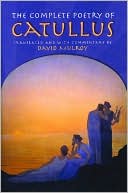Category Books
- Fiction Books & Literature
- Graphic Novels
- Horror
- Mystery & Crime
- Poetry
- Romance Books
- Science Fiction & Fantasy
- Thrillers
- Westerns
- Ages 0-2
- Ages 3-5
- Ages 6-8
- Ages 9-12
- Teens
- Children's Books
- African Americans
- Antiques & Collectibles
- Art, Architecture & Photography
- Bibles & Bible Studies
- Biography
- Business Books
- Christianity
- Computer Books & Technology Books
- Cookbooks, Food & Wine
- Crafts & Hobbies Books
- Education & Teaching
- Engineering
- Entertainment
- Foreign Languages
- Game Books
- Gay & Lesbian
- Health Books, Diet & Fitness Books
- History
- Home & Garden
- Humor Books
- Judaism & Judaica
- Law
- Medical Books
- New Age & Spirituality
- Nonfiction
- Parenting & Family
- Pets
- Philosophy
- Political Books & Current Events Books
- Psychology & Psychotherapy
- Reference
- Religion Books
- Science & Nature
- Self Improvement
- Sex & Relationships
- Social Sciences
- Sports & Adventure
- Study Guides & Test Prep
- Travel
- True Crime
- Weddings
- Women's Studies
Complete Poetry of Catullus » (1st Edition)

Authors: Gaius Valerius Catullus, David D. Mulroy, David (Translator) Mulroy, David Mulroy
ISBN-13: 9780299177744, ISBN-10: 0299177742
Format: Paperback
Publisher: University of Wisconsin Press
Date Published: May 2002
Edition: 1st Edition
Author Biography: Gaius Valerius Catullus
David Mulroy, associate professor of classics at the University of Wisconsin–Milwaukee, has published two other translated collections, Early Greek Lyric Poetry and Horace’s Odes and Epodes. He has performed his translations of Catullus’ poems at poetry slams in Milwaukee bars to enthusiastic response.
Book Synopsis
Classicists will welcome this new translation of the (often explicitly sexual) poems of the brilliant Roman writer. Mulroy (his affiliation is not indicated) provides a lengthy introduction on Catullus, the versions that remain of his work, poetry and politics in the late Roman Republic, and the poet's sincerity. The poems follow (in English only), all fully annotated. There is a bibliography, but no index. Annotation c. Book News, Inc., Portland, OR
Library Journal
The lyric poetry of antiquity is often as important to modern poets as it is to translators and classical scholars. Mulroy is a professor of classics (Univ. of Wisconsin, Milwaukee), and Carson (classics, McGill Univ.; The Beauty of the Husband) and the late William Matthews (After All: Last Poems) are well-regarded poets. Following Pound's dictum to "make it new," Mulroy and Matthews translate Catullus and Horace into modern American idiom, striving where possible to find cultural equivalents rather than literal translations. At the same time, they try to be true to the shifting tones and rhythms of their originals. The results are fluent, giving some sense of the contemporaneousness that Catullus and Horace would have evoked in their audiences. Carson's translation follows Sappho's diction and form much more closely and includes the Greek original on the facing page. Much of what survives of Sappho are fragments, often just a stray word, phrase, or even a few letters. Like many modern poets, Carson deploys these on the blank page, letting their suggestiveness fill the gaps and create whole lyrics in the imagination of the readers. All three translators aim for a general audience, though Mulroy and Carson also include notes and introductions of value to the more scholarly reader. All three books are recommended for both public and academic libraries. T.L. Cooksey, Armstrong Atlantic State Univ., Savannah, GA Copyright 2002 Cahners Business Information.
Table of Contents
Subjects
 Ancient & Classical Poetry
Ancient & Classical Poetry  Ancient Roman Poetry
Ancient Roman PoetryReference
 Quotations
Quotations  Epigrams
EpigramsFiction Books & Literature
 Poetry
Poetry  Ancient & Classical Poetry
Ancient & Classical PoetryNonfiction
 Reference
Reference  Quotations
Quotations
